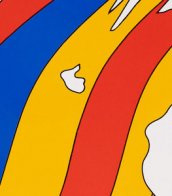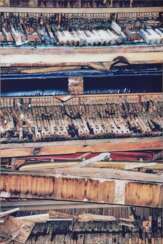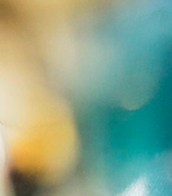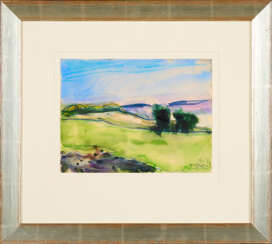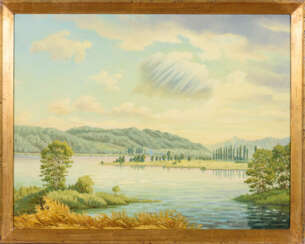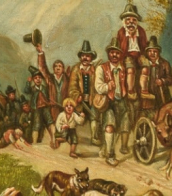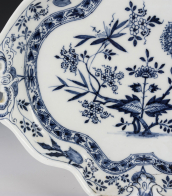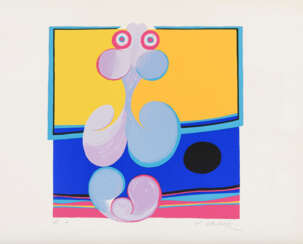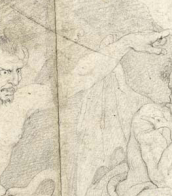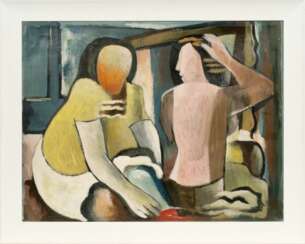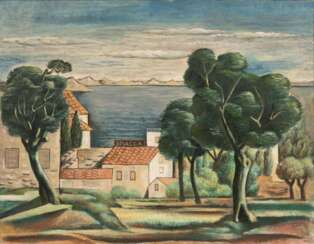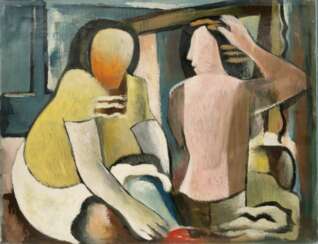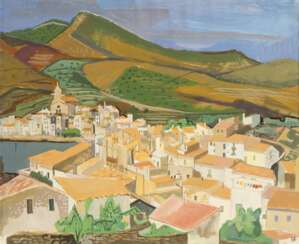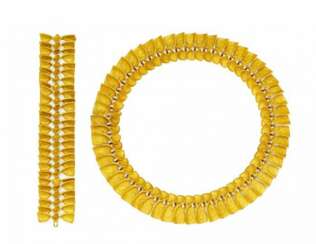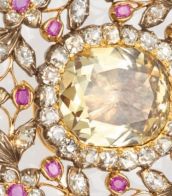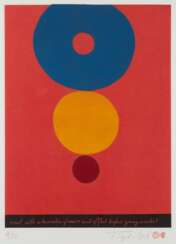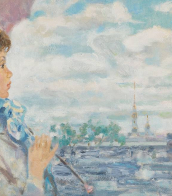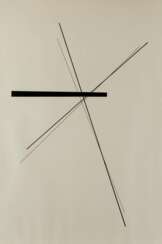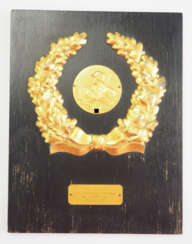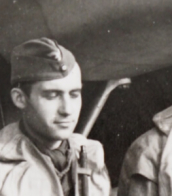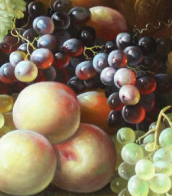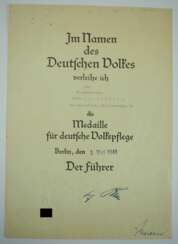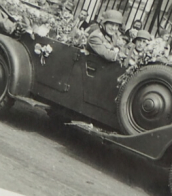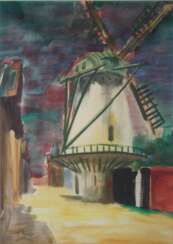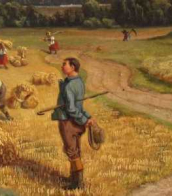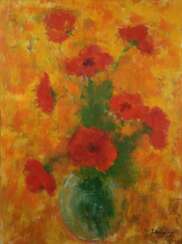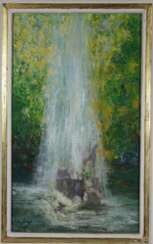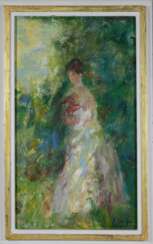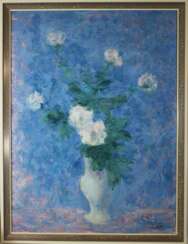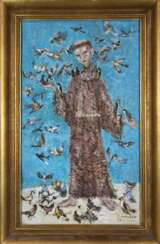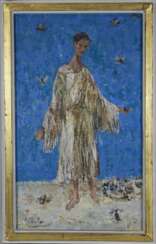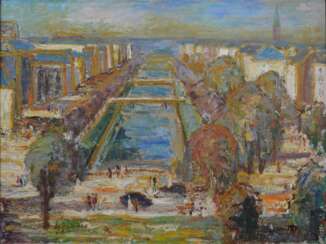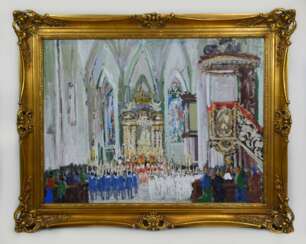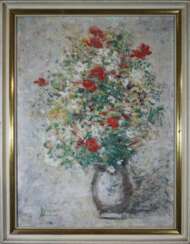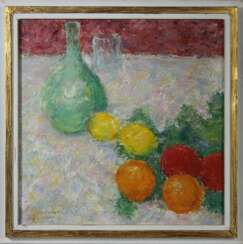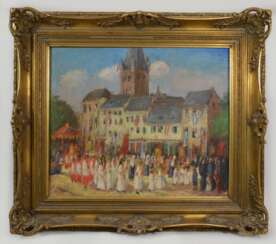wuppertal
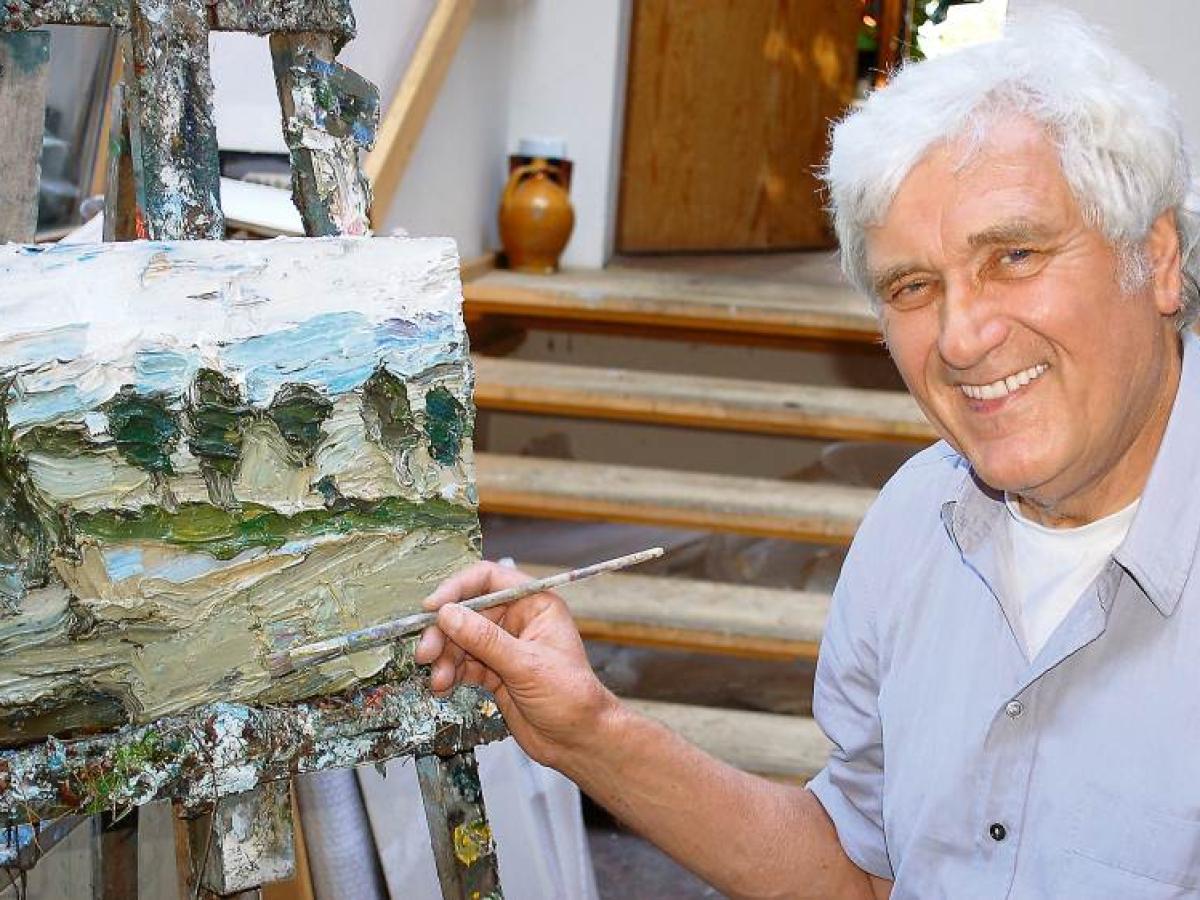
Klaus Fußmann is a contemporary German painter. He studied from 1957 to 1961 at the Folkwang University of the Arts in Essen and from 1962 to 1966 at the Berlin University of the Arts. From 1974 to 2005, he was a professor at the Berlin University of the Arts. His work has won several awards, such as the Villa Romana prize in 1972 and the Art Award of Darmstadt in 1979. Major presentations of his work include exhibitions at the Neue Nationalgalerie in Berlin, 1972; the Mathildenhöhe in Darmstadt, 1982; the Kunsthalle Emden, 1988; the Kunsthalle Bremen, 1992; and the Museum Ostwall in Dortmund, 2003. In 2005 Fußmann completed a monumental ceiling painting in the Mirror Hall of the Museum für Kunst und Gewerbe Hamburg.
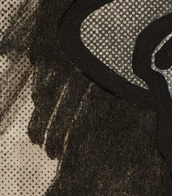
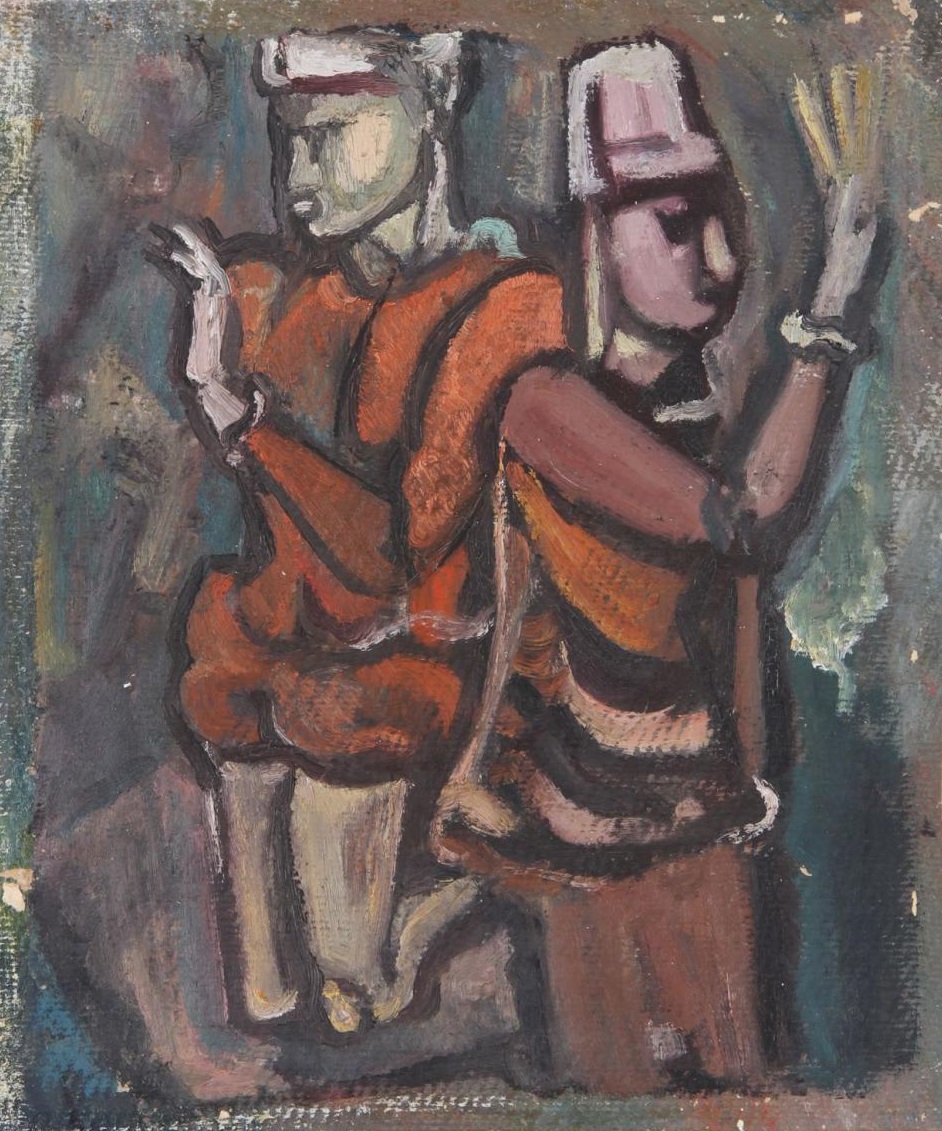
Hannes Schultze-Froitzheim, birth name Hans Werner Schultze, was a German painter and graphic artist.
Hannes Schultze-Froitzheim learned to draw from Max Bernuth, Heinrich Phieler and Hans Seiß in evening and Sunday classes at the Elberfeld Craftsmen's and Arts and Crafts School from 1920 onwards, in parallel with a commercial apprenticeship. In 1926 he transferred to the Düsseldorf Art Academy.
Schultze-Froitzheim sought the interplay of form and colour in his works. He examined the reciprocal relationship of forms to each other and often reduced them to the purely geometric body. He was also preoccupied with the interaction between light and dark forms as well as round and pointed shapes.
His stays by the sea in Scandinavia and Italy further inspired him to study and experiment with different forms. His late work is dominated by his so-called "compositions". In his mixed media he turns away completely from the figurative and uses different materials to depict the interplay between form and colour on the surface.
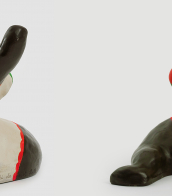

Hannes Schultze-Froitzheim, birth name Hans Werner Schultze, was a German painter and graphic artist.
Hannes Schultze-Froitzheim learned to draw from Max Bernuth, Heinrich Phieler and Hans Seiß in evening and Sunday classes at the Elberfeld Craftsmen's and Arts and Crafts School from 1920 onwards, in parallel with a commercial apprenticeship. In 1926 he transferred to the Düsseldorf Art Academy.
Schultze-Froitzheim sought the interplay of form and colour in his works. He examined the reciprocal relationship of forms to each other and often reduced them to the purely geometric body. He was also preoccupied with the interaction between light and dark forms as well as round and pointed shapes.
His stays by the sea in Scandinavia and Italy further inspired him to study and experiment with different forms. His late work is dominated by his so-called "compositions". In his mixed media he turns away completely from the figurative and uses different materials to depict the interplay between form and colour on the surface.


Hannes Schultze-Froitzheim, birth name Hans Werner Schultze, was a German painter and graphic artist.
Hannes Schultze-Froitzheim learned to draw from Max Bernuth, Heinrich Phieler and Hans Seiß in evening and Sunday classes at the Elberfeld Craftsmen's and Arts and Crafts School from 1920 onwards, in parallel with a commercial apprenticeship. In 1926 he transferred to the Düsseldorf Art Academy.
Schultze-Froitzheim sought the interplay of form and colour in his works. He examined the reciprocal relationship of forms to each other and often reduced them to the purely geometric body. He was also preoccupied with the interaction between light and dark forms as well as round and pointed shapes.
His stays by the sea in Scandinavia and Italy further inspired him to study and experiment with different forms. His late work is dominated by his so-called "compositions". In his mixed media he turns away completely from the figurative and uses different materials to depict the interplay between form and colour on the surface.
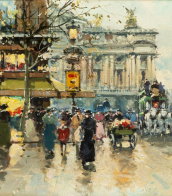

Hannes Schultze-Froitzheim, birth name Hans Werner Schultze, was a German painter and graphic artist.
Hannes Schultze-Froitzheim learned to draw from Max Bernuth, Heinrich Phieler and Hans Seiß in evening and Sunday classes at the Elberfeld Craftsmen's and Arts and Crafts School from 1920 onwards, in parallel with a commercial apprenticeship. In 1926 he transferred to the Düsseldorf Art Academy.
Schultze-Froitzheim sought the interplay of form and colour in his works. He examined the reciprocal relationship of forms to each other and often reduced them to the purely geometric body. He was also preoccupied with the interaction between light and dark forms as well as round and pointed shapes.
His stays by the sea in Scandinavia and Italy further inspired him to study and experiment with different forms. His late work is dominated by his so-called "compositions". In his mixed media he turns away completely from the figurative and uses different materials to depict the interplay between form and colour on the surface.


Hannes Schultze-Froitzheim, birth name Hans Werner Schultze, was a German painter and graphic artist.
Hannes Schultze-Froitzheim learned to draw from Max Bernuth, Heinrich Phieler and Hans Seiß in evening and Sunday classes at the Elberfeld Craftsmen's and Arts and Crafts School from 1920 onwards, in parallel with a commercial apprenticeship. In 1926 he transferred to the Düsseldorf Art Academy.
Schultze-Froitzheim sought the interplay of form and colour in his works. He examined the reciprocal relationship of forms to each other and often reduced them to the purely geometric body. He was also preoccupied with the interaction between light and dark forms as well as round and pointed shapes.
His stays by the sea in Scandinavia and Italy further inspired him to study and experiment with different forms. His late work is dominated by his so-called "compositions". In his mixed media he turns away completely from the figurative and uses different materials to depict the interplay between form and colour on the surface.


Hannes Schultze-Froitzheim, birth name Hans Werner Schultze, was a German painter and graphic artist.
Hannes Schultze-Froitzheim learned to draw from Max Bernuth, Heinrich Phieler and Hans Seiß in evening and Sunday classes at the Elberfeld Craftsmen's and Arts and Crafts School from 1920 onwards, in parallel with a commercial apprenticeship. In 1926 he transferred to the Düsseldorf Art Academy.
Schultze-Froitzheim sought the interplay of form and colour in his works. He examined the reciprocal relationship of forms to each other and often reduced them to the purely geometric body. He was also preoccupied with the interaction between light and dark forms as well as round and pointed shapes.
His stays by the sea in Scandinavia and Italy further inspired him to study and experiment with different forms. His late work is dominated by his so-called "compositions". In his mixed media he turns away completely from the figurative and uses different materials to depict the interplay between form and colour on the surface.

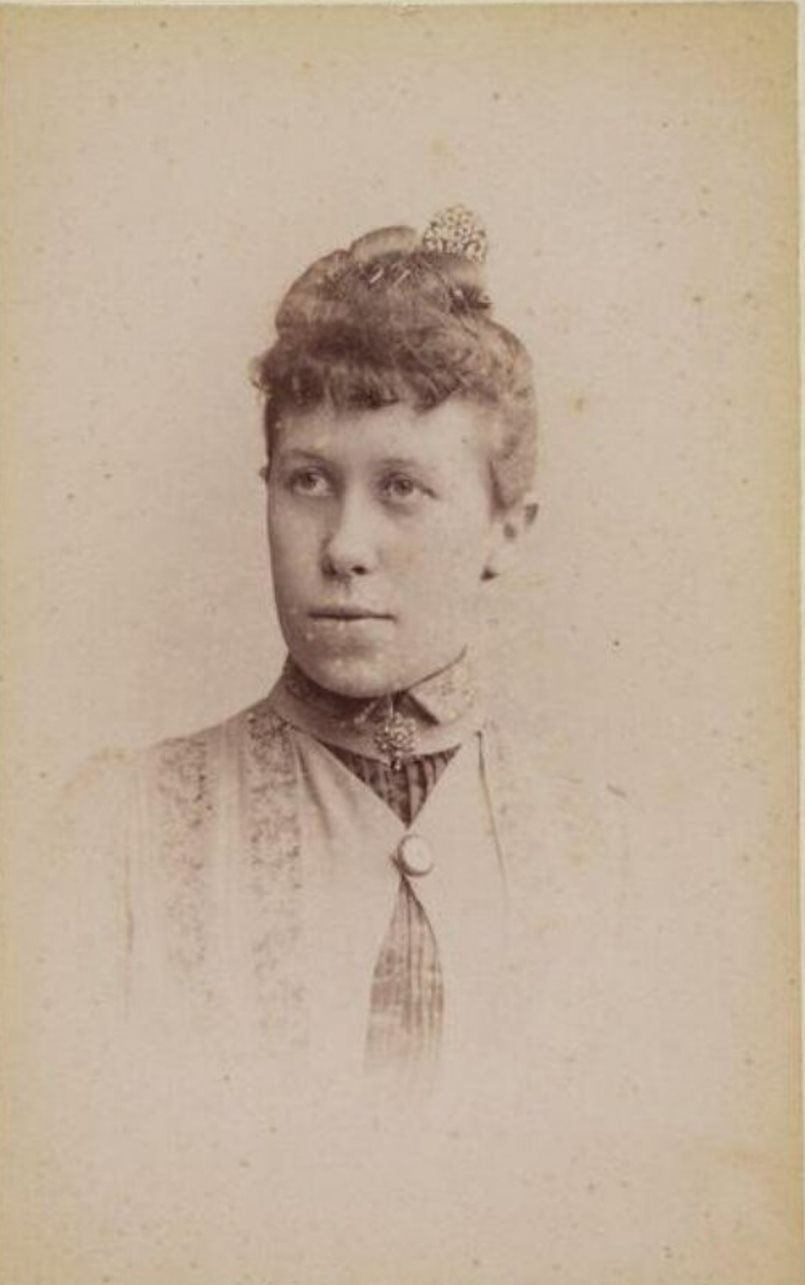
Martha Jäger is a German painter.
She studied at the academy in Düsseldorf, painting mainly landscapes.
